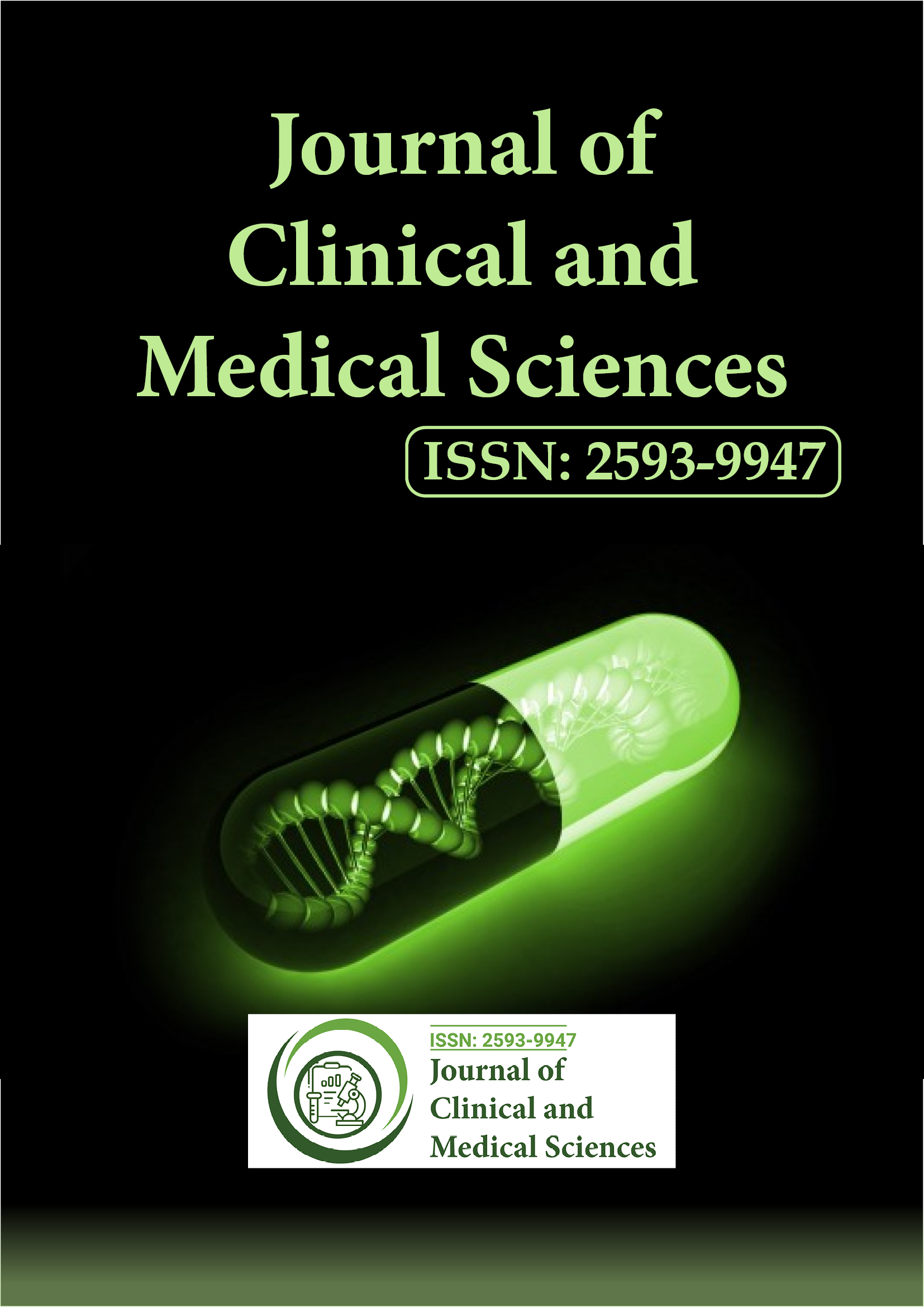Indexed In
- Euro Pub
- Google Scholar
Useful Links
Share This Page
Journal Flyer

Open Access Journals
- Agri and Aquaculture
- Biochemistry
- Bioinformatics & Systems Biology
- Business & Management
- Chemistry
- Clinical Sciences
- Engineering
- Food & Nutrition
- General Science
- Genetics & Molecular Biology
- Immunology & Microbiology
- Medical Sciences
- Neuroscience & Psychology
- Nursing & Health Care
- Pharmaceutical Sciences
Opinion Article - (2025) Volume 9, Issue 1
Regenerative Medicine and Stem Cell Therapy: The Next Frontier in Healing
James Xavier*Received: 01-Jan-2025, Manuscript No. JCMS-25-28572; Editor assigned: 03-Jan-2025, Pre QC No. JCMS-25-28572 (PQ); Reviewed: 17-Jan-2025, QC No. JCMS-25-28572; Revised: 24-Jan-2025, Manuscript No. JCMS-25-28572 (R); Published: 31-Jan-2025, DOI: : 10.35248/2593-9947.24.9.311
Description
Regenerative medicine and stem cell therapy represent a groundbreaking shift in healthcare, offering the potential to repair, replace and restore damaged tissues and organs. Unlike conventional treatments that manage symptoms, regenerative medicine aims to address the root causes of diseases by harnessing the body’s natural healing mechanisms. At the forefront of this field is stem cell therapy, which utilizes specialized cells capable of differentiating into various cell types, making them invaluable for treating injuries, degenerative diseases and organ failure? With continuous advancements in biotechnology, tissue engineering and gene editing, regenerative medicine is rapidly becoming the next frontier in healing, promising transformative solutions for patients worldwide.
Stem cells are unique because of their ability to self-renew and differentiate into different cell types, including muscle, nerve and blood cells. Embryonic stem cells, derived from early-stage embryos, possess the highest potential for differentiation but raise ethical concerns. In contrast, adult stem cells, found in bone marrow, fat and other tissues, have more limited differentiation potential but are widely used in therapies. Induced Pluripotent Stem Cells (iPSCs), which are reprogrammed from adult cells to behave like embryonic stem cells, have revolutionized the field by providing an ethical and patient-specific source of stem cells for therapy. These advancements allow researchers to develop treatments tailored to an individual’s genetic and cellular profile, enhancing the precision and effectiveness of regenerative therapies.
One of the most capable applications of regenerative medicine is in treating neurodegenerative diseases such as Parkinson’s, Alzheimer’s and spinal cord injuries. Current treatments for these conditions focus on symptom management, but stem cell therapy offers the possibility of replacing lost neurons and restoring function. Research has shown that stem cell-derived neurons can integrate into existing neural networks, potentially reversing damage and improving neurological function. In spinal cord injuries, experimental treatments using stem cells have demonstrated promising results in restoring motor function, giving hope to patients with paralysis.
In orthopedics, regenerative medicine is revolutionizing the treatment of joint injuries, osteoarthritis and bone fractures. Stem cell-based therapies are being used to regenerate cartilage, accelerate bone healing and improve joint function. Patients suffering from chronic joint pain may soon benefit from regenerative treatments that restore damaged tissues without the need for invasive surgeries such as joint replacements. Tissue engineering approaches, including the use of biomaterials and scaffolds, further enhance the ability to create functional replacement tissues that integrate seamlessly with the body.
Despite its immense potential, regenerative medicine faces several challenges in clinical translation. The safety and efficacy of stem cell therapies must be rigorously tested through clinical trials to ensure their long-term benefits and minimize risks such as tumor formation and immune rejection. Ethical concerns surrounding embryonic stem cell research continue to be debated, although alternatives like iPSCs are helping to address these issues. Additionally, the high cost of stem cell treatments and the need for advanced manufacturing techniques present barriers to widespread accessibility.
Regenerative medicine and stem cell therapy are redefining the way diseases and injuries are treated, moving beyond symptom management to actual tissue repair and regeneration. With ongoing research and technological innovations, the dream of growing new organs, reversing neurodegenerative diseases and healing previously untreatable conditions is becoming a reality. As this field continues to evolve, it holds the potential to extend human lifespan, improve quality of life and revolutionize modern medicine by provide truly curative solutions for some of the most challenging medical conditions.
Citation: Xavier J (2025). Regenerative Treatment and Stem Cell Therapy: The Next Limit in Therapeutic. J Clin Med Sci. 9:311.
Copyright: © 2025 Xavier J. This is an open access article distributed under the terms of the Creative Commons Attribution License, which permits unrestricted use, distribution, and reproduction in any medium, provided the original author and source are credited
